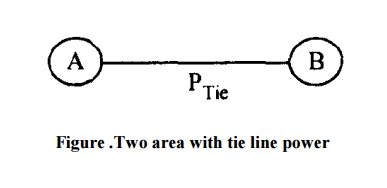Chapter: Power System Operation and Control : Real Power Frequency Control
Interconnected Operation
INTERCONNECTED OPERATION
Ø Power systems are interconnected for economy and continuity of power supply.
Ø For the interconnected operation incremental efficiencies, fuel costs. Water availability, generation limits, tie line capacities, spinning reserve allocation and area commitment‟s are important considerations in preparing load dispatch schedules.
1. Flat Frequency Control of lnter- connected Stations
Ø Consider two generating stations connected by a tie line as in Fig.
Ø For a load increment on station B, the kinetic energy of the generators reduces to absorb the same.
Ø Generation increases in both the stations A and B, and frequency will be less than normal at the end of the governor response period.
Ø The load increment will be supplied partly by A and partly by B.
Ø The tie line power flow will change thereby.
Ø If a frequency controller is placed at B, then it will shift the governor characteristic at B parallel to itself as shown in Fig and the frequency will be restored to its normal value fs' reducing the change in generation in A to zero.

Assumption in Analysis:
The following assumptions are made in the analysis of the two area system:
1. The overall governing characteristic of the operating units in any area can be represented by a linear curve of frequency versus generation.
2. The governors in both the areas start acting simultaneously to changes in their respective areas.
3. Supplementary control devices act after the initial governor response is over The following time instants are defined to explain the control sequence:
To=is the instant when both the areas are operating at the scheduled frequency and Tie=line interchange and load change takes place.
tl = the instant when governor action is initiated at both A and B. t2 =the instant when governor action ceases.
t3 =the instant when regulator action begins.
t4 = the instant when regulator action ceases.
`
Ø While the initial governor response is the same as for the previous case, the action of the controller in B will force the generation in area B to absorb the load increment in area A.
Ø When the controller begins to act at t3, the governor characteristic is shifted parallel to itself in B till the entire load increment in A is absorbed by B and the frequency is restored to normal.
Thus, in this case while the frequency is regulate on one hand, the tie-line schedule is not maintained on the other hand.
Ø If area B, which is in charge of frequency regulation, is much larger than A, then load changes in A will not appreciably affect the frequency of the system.
Ø Consequently, it can be said that flat frequency control is useful only when a small system is‟ connected to a much larger system.
Related Topics